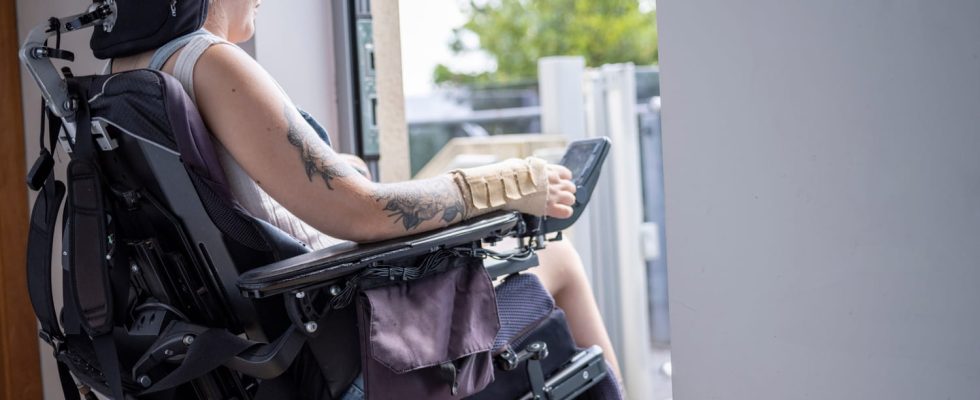A quadriplegic person has neurological damage to all 4 limbs due to a lesion of the spinal cord at the cervical level. The higher the lesion (at the neck level near the head) the more serious the consequences.
What does “being quadriplegic” mean?
Quadriplegia is a neurological attack that affects all 4 limbs (both arms and both legs) by spinal cord injury at the cervical level. The attack can be total or partial, transitional or definitive. This paralysis is generally accompanied by sensory disorders or even muscle tone disorders. The after-effects may be more or less significant depending on the location of the lesion in the spinal cord. There are 7 cervical vertebrae (C1 to C7). The higher the lesion, in other words at the level of the neck near the head, the more serious the consequences will be.while the lower they are, the less significant the consequences will be on the motor but also respiratory level.
Can a quadriplegic speak?
Quadriplegia does not affect the motor skills of the head and face, the vast majority of quadriplegic people can express themselves in an ordinary way. But there may be associated trauma (head) which causes specific after-effects on speech or language, especially. “Upper quadriplegia that affects the respiratory muscles may also require mechanical ventilation and prevent the patient from speaking, or require a tracheotomy.“, adds the neurosurgeon.
The damage can manifest itself by different symptoms at different stages depending on the level and severity of the causal spinal cord injury:
- The loss of more or less complete voluntary motor skills of the 4 limbs;
- Sensitivity disorders (pain, touch, perception of temperature, etc.)
- Sphincter disorders including urinary incontinence…;
- Respiratory disorders if the respiratory muscles are affected in cases of upper paralysis (lesions of the respiratory centers of the first levels of the cord under the brain);
- Involuntary and sometimes painful muscle contractions;
- Neuropathic pain.
Can a quadriplegic recover? Walk again?
Quadriplegia is a serious condition and Most of the time, spinal cord injuries are permanent. “It all depends on what caused the disability, as well as the importance and duration of the lesion, and therefore the precocity of the treatments that can be undertaken, specifies Dr. Debono. In certain compressive causes (for example, a tumor impacting the cervical spinal cord), treatment may allow partial or total recovery. If it is due to an accident, there is currently no treatment that can completely cure quadriplegia. and most measures are symptomatic.
In general, the level of motor recovery can be assessed 2 or 3 months after the accident.,
However, it is possible to reduce the consequences of the disability thanks to emergency neurosurgical intervention which consists of decompressing the cord and anti-inflammatory treatments which can limit the extension of the lesion at a very early stage. In general, the level of motor recovery can be assessed 2 or 3 months after the accident, but each case remains unique. Subsequently, the care is multidisciplinary, initially rehabilitative (physical and rehabilitation doctor, physiotherapist, occupational therapy, psychological support) and symptomatic for the after-effects associated with motor damage (urinary, digestive, cutaneous, algic (pain ).
Thanks to Dr Bertrand Debono, Neurosurgeon, President of the French Society of Liberal Neurosurgeons (SFNCL)
